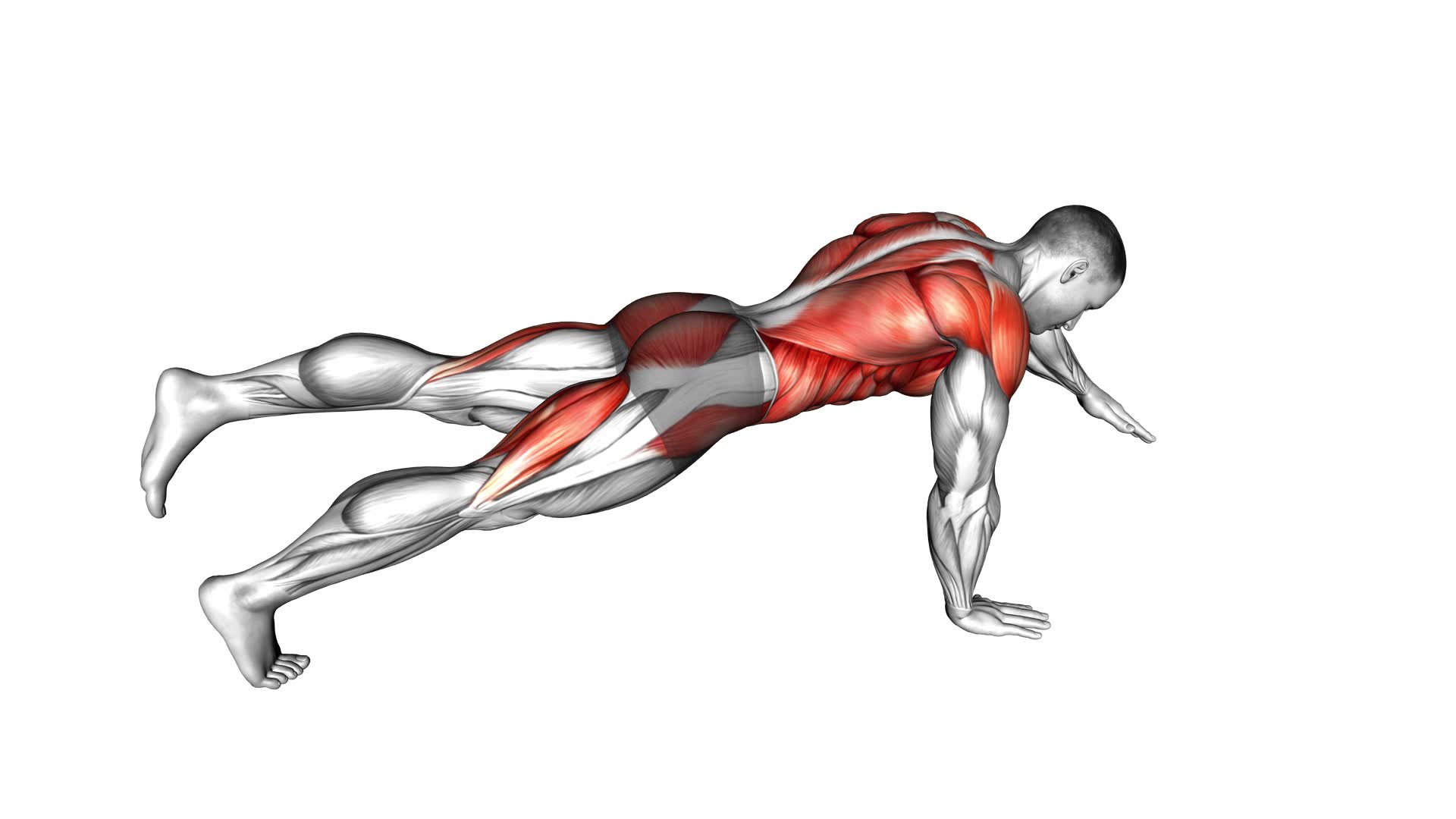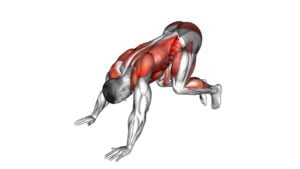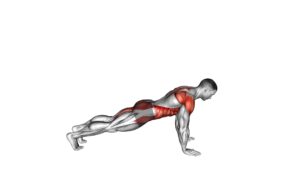Power Point Plank – Video Exercise Guide & Tips

Are you looking for a challenging exercise that will work your entire body? Look no further than the Power Point Plank!
Watch This Exercise Video
In this video exercise guide, we'll show you the proper form and technique, as well as variations for different fitness levels.
Plus, we'll share tips on how to increase the intensity and avoid common mistakes.
Get ready to strengthen your core and improve your overall fitness with the Power Point Plank!
Key Takeaways
- Customization and modification
- Engages different muscle groups
- Improves balance and coordination
- Increases intensity and adds variety
Benefits of the Power Point Plank
You can reap numerous benefits from incorporating the Power Point Plank into your exercise routine.
The Power Point Plank is a modified version of the traditional plank exercise that offers unique advantages.
One of the benefits of the Power Point Plank is that it allows for greater customization and modification.
Unlike the traditional plank, which requires you to hold a static position, the Power Point Plank involves moving your limbs and core in a controlled manner.
This movement engages different muscle groups, providing a more comprehensive workout.
Additionally, the Power Point Plank helps improve balance and coordination as you navigate through the various positions.
Another advantage of the Power Point Plank is that it challenges your muscles in different ways compared to the traditional plank.
By incorporating movement, the Power Point Plank increases the intensity and adds variety to your workout routine.
It also targets muscles that may not be as engaged during a traditional plank.
Proper Form and Technique for the Power Point Plank
To perform the Power Point Plank with proper form and technique, start by positioning yourself on all fours. Here are some key tips to ensure you execute this exercise correctly:
- Engage your core: Brace your abs and keep your spine in a neutral position throughout the movement. This will help protect your lower back and maximize the effectiveness of the exercise.
- Align your body: Keep your wrists directly under your shoulders and your knees under your hips. Your body should form a straight line from your head to your knees.
- Maintain stability: Avoid rocking back and forth or allowing your hips to sag. Focus on keeping your body stable and still, engaging your core muscles to maintain balance.
By following these guidelines, you can perform the Power Point Plank in a safe and effective manner.
However, it's important to be aware of common mistakes that can compromise your form and hinder your progress. Some of these mistakes include:
- Allowing your lower back to sag: This puts excessive stress on your lumbar spine and can lead to injury.
- Placing too much weight on your shoulders: This can strain your neck and upper back.
- Holding your breath: Remember to breathe deeply and steadily throughout the exercise to maintain proper oxygen flow to your muscles.
Now that you know the proper form and technique, you can enjoy the benefits of the Power Point Plank. This exercise strengthens your core, improves stability, and enhances overall body control. Incorporate it into your routine to take your fitness to the next level.
Variations of the Power Point Plank for Different Fitness Levels
To progress your Power Point Plank and challenge yourself at different fitness levels, incorporate variations that target specific muscle groups and increase the difficulty of the exercise. These advanced modifications, known as power point plank progressions, allow you to continually push yourself and achieve new levels of strength and stability.
One variation is the Single Leg Power Point Plank. Start in the standard power point plank position, but instead of having both feet on the ground, lift one leg off the floor. This places more emphasis on your core and forces your stabilizing muscles to work harder to maintain balance.
Another challenging variation is the Power Point Plank with Knee Tuck. Begin in the standard power point plank position, then bring one knee towards your chest and hold for a few seconds before returning it to the starting position. Alternate between legs to engage your abdominal muscles and improve overall core strength.
For an even greater challenge, try the Power Point Plank with Arm Reach. Start in the standard power point plank position and then extend one arm forward, reaching as far as you can while maintaining proper form. This variation not only targets your core but also engages your upper body muscles.
Incorporating these variations into your power point plank routine won't only keep your workouts interesting but also help you build strength, stability, and endurance. Remember to always perform these exercises with proper form and listen to your body to prevent injury.
Tips for Increasing the Intensity of Your Power Point Plank
To increase the intensity of your Power Point Plank, try incorporating these tips:
- Advanced Modifications: Once you have mastered the basic Power Point Plank, you can challenge yourself by trying more advanced variations. One option is to elevate your feet on a stability ball or a bench, which will further engage your core muscles. Another option is to add a leg lift or a knee tuck while holding the plank position, which will increase the demand on your abs and hip flexors.
- Equipment Options: To take your Power Point Plank to the next level, consider incorporating some equipment. Using a resistance band around your ankles or wrists can provide additional resistance and make the exercise more challenging. You can also try using a stability ball or a BOSU ball to add instability, forcing your core muscles to work harder to maintain balance.
- Time Under Tension: Instead of simply holding the plank position for a set amount of time, try increasing the time under tension by performing slow and controlled movements. For example, you can lower your body down to the ground slowly and then push back up, or you can alternate lifting one arm or leg off the ground while maintaining the plank position.
By implementing these tips, you can effectively increase the intensity of your Power Point Plank and continue challenging your core muscles.
Now, let's explore some common mistakes to avoid when performing the power point plank.
Common Mistakes to Avoid When Performing the Power Point Plank
Avoid these common mistakes when performing the Power Point Plank to ensure proper form and maximize the effectiveness of the exercise. One of the most common mistakes is letting your hips sag or lift too high. To maintain proper form, imagine your body as a straight line from your head to your heels. Engage your core muscles and keep your hips level throughout the exercise.
Another mistake is placing your hands too far apart. Your hands should be directly under your shoulders, with your fingers pointing forward. This will provide stability and prevent strain on your wrists. Additionally, avoid rounding your back or allowing your shoulders to collapse. Keep your spine neutral and your shoulder blades pulled back and down.
Finally, make sure to breathe properly. Many people hold their breath during planks, which can lead to tension and fatigue. Inhale deeply through your nose and exhale fully through your mouth, maintaining a steady breathing rhythm.
Frequently Asked Questions
How Many Sets and Repetitions Should I Do for the Power Point Plank?
To get the most out of the power point plank, it's important to know how many sets and repetitions to do. Without the context of the video exercise guide, here's some general advice.
Aim for 3-4 sets of 10-15 repetitions, but listen to your body and adjust as needed.
Don't forget to incorporate variations and progressions to keep challenging yourself.
Can the Power Point Plank Help With Improving Core Strength?
Yes, the power point plank can definitely help improve your core strength.
Core stability exercises, like plank variations, are great for targeting your abdominal muscles, lower back, and hips.
By performing the power point plank regularly, you can strengthen these muscles and improve your overall core stability.
This exercise specifically targets your obliques, which can help improve your balance and prevent lower back pain.
Incorporate the power point plank into your workout routine to see results.
Is It Necessary to Have a Power Point Machine to Perform the Power Point Plank Exercise?
No, you don't need a power point machine to perform the power point plank exercise. The power point plank can be done on any flat surface. It's a versatile exercise that targets your core muscles.
If you're looking for variations, you can try adding leg lifts or side planks to challenge yourself further. Alternatively, there are other exercises like traditional planks or mountain climbers that can also help improve your core strength.
Can the Power Point Plank Be Modified for Individuals With Lower Back Pain?
If you're dealing with lower back pain, modifying the power point plank exercise can help. There are alternatives you can try that will still work your core muscles without putting too much strain on your back.
By adjusting the position or using props like an exercise ball, you can make the exercise more comfortable and reduce the risk of aggravating your lower back pain.
It's important to listen to your body and consult with a professional if needed.
Are There Any Specific Breathing Techniques to Follow While Performing the Power Point Plank?
When performing the power point plank, it's important to focus on your breathing techniques. By taking slow, deep breaths, you can engage your core muscles and maintain stability throughout the exercise.
Breathing in through your nose and exhaling through your mouth can help you stay calm and centered. This not only enhances the effectiveness of the power point plank but also promotes overall fitness by improving lung capacity and oxygen intake.
Conclusion
In conclusion, the Power Point Plank is a highly effective exercise that offers numerous benefits for your core strength and stability. By maintaining the proper form and technique, you can maximize the results and prevent any potential injuries.
Additionally, there are variations available for different fitness levels, allowing individuals to progress at their own pace. Remember to increase the intensity gradually and avoid common mistakes to ensure a safe and effective workout.
Incorporate the Power Point Plank into your routine for a stronger and more stable core.

Author
Years ago, the spark of my life’s passion ignited in my mind the moment I stepped into the local gym for the first time. The inaugural bead of perspiration, the initial endeavor, the very first surge of endorphins, and a sense of pride that washed over me post-workout marked the beginning of my deep-seated interest in strength sports, fitness, and sports nutrition. This very curiosity blossomed rapidly into a profound fascination, propelling me to earn a Master’s degree in Physical Education from the Academy of Physical Education in Krakow, followed by a Sports Manager diploma from the Jagiellonian University. My journey of growth led me to gain more specialized qualifications, such as being a certified personal trainer with a focus on sports dietetics, a lifeguard, and an instructor for wellness and corrective gymnastics. Theoretical knowledge paired seamlessly with practical experience, reinforcing my belief that the transformation of individuals under my guidance was also a reflection of my personal growth. This belief holds true even today. Each day, I strive to push the boundaries and explore new realms. These realms gently elevate me to greater heights. The unique combination of passion for my field and the continuous quest for growth fuels my drive to break new ground.



